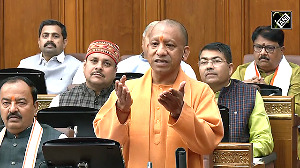While falling import duties have lowered their relative attractiveness, the fresh tax sops will make it difficult to resist similar demands from others.
N Srinivasan, Director General, Confederation of Indian Industry
"Many foreign companies want to invest in India and stay here and SEZs would provide an ideal ground for investments since that allows them to tap the domestic market as well"
The Government of India has set a target of achieving close to $23 billion in investments in special economic zones by 2009. To achieve this target, the government has simplified the rules and made investment in SEZs easier earlier this month.
This simplification of procedures for setting up SEZs is part of the government's strategy to boost employment across the country and make India a manufacturing hub for companies who want to use it as an export base.
There are two possible reactions to this announcement. The first is that given the economic buoyancy in India at present, this target will be easily achieved. The second is to wonder how the target will be reached and would this ambitious plan take off.
I belong to the first category of optimists. Why do I say that? First is the employment potential that the new SEZ policy provides. Given the large potential that exists for generating employment, the states in India should be enthused to attract private players to set up such SEZs in their states.
The total number of people who can be employed by the SEZ units by 2009 has been put at 500,000, which is a very large number for states to ignore.
What would, however, be important for states to follow is a policy of quick clearances for setting up the project. By speeding up the process of clearances at the Central and state level the government will be able to attract several foreign players to invest in setting up these zones.
Second, India has the potential to become a very important hub for exports to the world and setting up units in SEZs would provide firms with the infrastructure and the flexibility to use India as a base to tap markets from the Gulf in the west to the Asean nations in the east.
Many foreign companies want to invest in India and stay here and SEZs would provide an ideal ground for investments since that allows them to tap the domestic market as well. The mood of many foreign investors in India can be seen from a statement by Dan Scheinnan of Cisco Systems who said in mid-2005 "we came to India for the costs, stayed for quality and are now investing for innovation".
There has been one criticism to the policy. Many companies feel that the existing labour policy is not the best option for attracting investments into SEZs. However, I feel that given the fact that labour is a state subject, many states may like to look at easing the norms as long as the basic rights of workers are protected. Industry is very much in favour of protecting worker rights, but only wants enough flexibility before investing in setting up an SEZ. Foreign investors too seek similar flexibility without taking away any of the rights that are available to workers.
In short, the new SEZ policy looks good enough for attracting investments and will go a long way in making India a large manufacturing hub in the region.
Bibek Debroy, Secretary General, PHDCCI
"In a situation of overall liberalisation in the country, and where import duties are low and falling, SEZs have lost a lot of their charm - in any case, tax sops alone don't drive investments"
Special Economic Zones as a policy belong to an era when you couldn't liberalise overall policy and so decided to focus on one or two areas where this could be done. Twenty years ago, it made some sense to come up with such a policy. Today, in the context of overall liberalisation, SEZs make little sense.
Sure, there is no import duty in SEZs, but then duty levels are coming down and over the medium to long term, will be even lower - when importing firms wish to sell to the domestic market, however, they will have to face the usual bureaucracy. In which case, the import duty benefit may not be that significant.
Which is why, in fact, even the EPCG (export promotion capital goods) scheme gets more takers than the existing SEZs - as a general principle, all schemes based on import duty concessions are becoming more irrelevant.
There is talk of how labour laws will be less restrictive in SEZs, but I don't see how this can happen since it will even be violative of Article 14 of the Constitution - the late Commerce Minister Murasoli Maran initially talked of less restrictive labour laws for SEZs in the EXIM policy, but never mentioned it after the huge furore that resulted from his initial statement. It is said there will be less bureaucracy in the SEZs, but surely this is a policy objective for all the country.
In which case, the real attraction of SEZs is the tax holiday promised. I think all exemptions and fiscal concessions should go in the process of overall tax reform, and if you begin to have concessions in one area, because it is arbitrary, you cannot prevent it from being extended elsewhere. It can be argued that if you have tax concessions in Himachal Pradesh and Uttaranchal Pradesh, why can't you have similar concessions in SEZs?
In a situation where the import duty is not the issue, the real benefit to users can only be the vastly superior infrastructure that is being promised. In a democracy, you can't set up superior infrastructure in one area and not the other. But, in an SEZ, the private sector can set up top class infrastructure in a few select areas.
But since you already have top class infrastructure in Pudong, I see a greater likelihood of people going there than coming here - don't forget, the investment in SEZs will only take place if investors come, and there are a host of things that determine this.
I'm not too convinced by the argument that the Chinese model of SEZs is of great relevance to us. For one, almost all of China's like an SEZ today. But more important, there's such a tremendous waste of capital in China - they have investment levels of around 45 per cent and even if there's a growth of 10 per cent, this is a very high ICOR to have.







 © 2025
© 2025